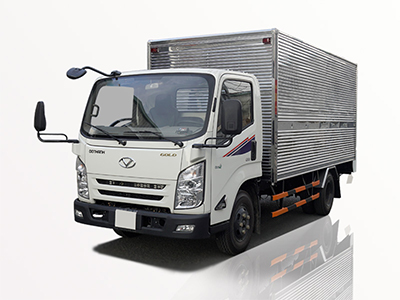The roll off body is a crucial component in the waste management and transportation industries. Its efficiency in loading, transporting, and unloading materials makes it a popular choice for various applications. In this article, we will delve into the roll off body, exploring its features, benefits, types, and real-world applications, along with practical tips and frequently asked questions.
What is a Roll Off Body?
A roll off body is a specialized container designed for transporting waste materials, debris, or other loads. It typically consists of a rectangular container mounted on a chassis that can be easily deposited or picked up by a roll-off truck. The roll off body’s design allows for efficient loading and unloading, making it ideal for construction sites, renovation projects, and waste disposal services.
Features of a Roll Off Body
Design and Construction
The roll off body is built to handle tough materials and conditions. It usually features:
- Heavy-Duty Materials: Constructed from high-strength steel to withstand heavy loads.
- Open-Top Design: Facilitates easy access for loading debris and waste.
- Multiple Sizes: Available in various lengths and heights to accommodate different needs.
- Roller Mechanism: Enables smooth loading and unloading onto a truck.
Weight Capacity
Roll off bodies come in different weight capacities, typically ranging from 10 to 40 cubic yards. It’s essential to select a roll off body that matches the weight of the materials being transported.
Advantages of Using a Roll Off Body
Efficiency in Waste Management
One of the primary benefits of roll off bodies is their efficiency in managing waste. They allow for quick loading and unloading, minimizing downtime and increasing productivity on job sites.
Cost-Effective Solution
Using a roll off body can be a cost-effective solution for businesses. Their durability and load capacity reduce the need for multiple trips and additional containers.
Versatility
Roll off bodies are versatile and can be used for various materials, including:
- Construction debris
- Renovation waste
- Green waste
- Industrial materials
Types of Roll Off Bodies
Standard Roll Off Body
The standard roll off body is the most commonly used type. It is ideal for general waste and is available in multiple sizes.
Compactor Roll Off Body
The compactor roll off body includes a compaction system that compresses the waste, maximizing space and minimizing the number of trips required.
Open-Top Roll Off Body
Open-top roll off bodies have no lid, allowing for easy access to the contents. They are suitable for lighter materials and quick disposal.
Closed Roll Off Body
A closed roll off body features a lid or door, protecting the contents from the elements and ensuring safety during transport.
Choosing the Right Roll Off Body
Assessing Your Needs
When selecting a roll off body, consider the following factors:
- Type of Material: Ensure the body is designed to handle the specific type of waste.
- Weight Limits: Match the weight capacity with the anticipated load.
- Access Requirements: Consider the space available for loading and unloading.
Rental vs. Purchase
Decide whether to rent or purchase a roll off body based on your frequency of use, budget, and storage capacity. Renting may be ideal for one-time projects, while purchasing can be more cost-effective for ongoing operations.
Practical Examples and Tips for Using a Roll Off Body
Effective Loading Techniques
For safe and efficient loading:
- Distribute Weight Evenly: Keep the load balanced to prevent tipping.
- Utilize Equipment: Use forklifts or loaders to handle heavy items.
- Organize Materials: Separate recyclable materials to streamline disposal.
Maintenance Tips
To ensure longevity and reliability, regularly inspect and maintain your roll off body:
- Check for rust and damage to the structure.
- Inspect the roller mechanism and ensure smooth operation.
- Ensure all safety features are functioning correctly.
Environmental Considerations
Using a roll off body offers several environmental benefits, including:
- Facilitating recycling by providing designated containers for different materials.
- Reducing carbon emissions by optimizing transportation routes and minimizing trips.
Regulations and Compliance
When using roll off bodies, it is essential to comply with local regulations regarding waste disposal and recycling. Familiarize yourself with your area’s rules to avoid fines and penalties.
Frequently Asked Questions (FAQ)
1. What is the typical size of a roll off body?
Roll off bodies typically range from 10 to 40 cubic yards, depending on the application and need.
2. Can I use a roll off body for hazardous waste?
Yes, specialized roll off bodies are available for hazardous waste. However, ensure compliance with local regulations regarding transportation and disposal.
3. How much does it cost to rent a roll off body?
rental costs vary based on size, location, and duration. Expect to pay between $200 and $1,000 for a standard rental.
4. Are roll off bodies environmentally friendly?
Yes, roll off bodies can promote recycling and reduce transportation emissions when used correctly.
5. How often should I maintain my roll off body?
Regular maintenance is recommended every few months, or more frequently if used intensively. Always inspect before and after each use.
6. What materials can be transported in a roll off body?
Roll off bodies can transport a variety of materials, including construction debris, green waste, industrial materials, and household junk.





